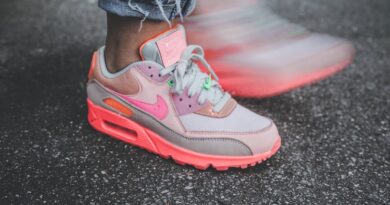In the ever-evolving world of fashion, staying on top of the latest trends and styles is no easy task. With the rapid growth of technology, the fashion industry is undergoing a significant transformation. One such breakthrough technology that has taken the industry by storm is Chat GPT, a chatbot that is revolutionizing the way consumers shop for clothes and accessories. In this article, we will explore the various ways Chat GPT is transforming the online shopping experience, discuss the rise of style bots, and delve into the future trends of chatbots in the retail industry.
Introduction to Chat GPT in the Fashion Industry
Chat GPT, or Generative Pre-trained Transformer, is an advanced language model that harnesses the power of artificial intelligence (AI) to generate human-like text. This technology has found its way into the fashion industry, where it is being used to create chatbots that offer fashion help and advice to consumers. These chatbots are designed to provide personalized recommendations, answer customer queries, and even engage in casual conversations about fashion, all while maintaining a natural and engaging flow.
The integration of Chat GPT in the fashion industry is a testament to the growing reliance on AI-powered solutions to improve customer experience and streamline processes. As more and more fashion brands and retailers adopt this technology, it is set to reshape the landscape of online shopping, making it more interactive, personalized, and enjoyable for consumers.
How Chatbots are Transforming the Online Shopping Experience

Chatbots have become an integral part of the online shopping experience, thanks to their ability to provide instant fashion help and support. They can assist shoppers in various ways, from answering questions about product availability and sizing to offering personalized recommendations based on individual preferences and style. The use of chatbots has revolutionized the way consumers interact with fashion brands, making the shopping process more efficient and enjoyable.
One of the most significant benefits of chatbots is their ability to provide real-time customer support. As a result, customers can have their questions and concerns addressed promptly, without having to wait for a response from a human representative. This not only enhances the overall shopping experience but also helps build trust and loyalty between the customer and the brand.
Furthermore, chatbots can collect valuable customer data, which can be used to improve marketing strategies, product offerings, and overall customer experience. By analyzing user interactions, chatbots can identify trends and patterns, enabling fashion brands to make data-driven decisions and cater to the ever-changing needs and preferences of their customers.
Mobile Smart Fashion Reviews: The Rise of Style Bots
In recent years, there has been a surge in the popularity of mobile smart fashion reviews, with style bots emerging as a key player in this space. These AI-powered chatbots are designed to provide personalized fashion advice and recommendations based on a user’s preferences, body type, and even current fashion trends. Style bots analyze user inputs and scour the internet for suitable clothing options, presenting them in a curated and easily digestible format.
These style bots have caught the attention of fashion enthusiasts worldwide, as they offer a unique and convenient way to discover new styles and trends without spending hours browsing through countless websites and online stores. By leveraging AI and machine learning algorithms, style bots can quickly process large amounts of data, ensuring that users receive the most relevant and up-to-date fashion advice.
Moreover, the use of style bots is not limited to individual consumers. Fashion brands and retailers can also integrate these chatbots into their websites and mobile apps, providing their customers with a seamless and interactive shopping experience. This not only helps in driving customer engagement but also enables brands to stand out in the competitive online fashion retail space.
The Role of Chatbots in Online Fashion Retail
Chatbots are playing an increasingly important role in the online fashion retail space, as they help bridge the gap between customers and brands by providing instant fashion help and support. They serve as an invaluable tool for fashion retailers, as they can handle multiple customer queries simultaneously, freeing up human resources to focus on more complex tasks and strategic planning.
In addition to offering personalized recommendations and answering customer queries, chatbots can also be used to improve the overall user experience. For instance, they can guide customers through the entire shopping process, from product selection and payment to order tracking and delivery. By providing a seamless and hassle-free experience, chatbots help enhance customer satisfaction and increase the likelihood of repeat purchases.
Moreover, chatbots can help fashion retailers optimize their inventory management by analyzing customer data and predicting trends. This enables them to make more informed decisions regarding product stocking, pricing, and promotions, ultimately leading to higher sales and greater customer satisfaction.
- At-Home Teeth Whitening Kits: The Ultimate Guide
- The Hamilton Beach Big Mouth Juice Extractor: A Budget-Friendly Powerhouse
Benefits of Using a Fashion Advisor Chatbot
A fashion advisor chatbot offers numerous benefits to both consumers and businesses, making it an indispensable tool in the world of online fashion retail. Here are some of the key advantages of using a fashion advisor chatbot:
- Personalized recommendations: By analyzing a user’s preferences, body type, and past purchases, a fashion advisor chatbot can provide personalized fashion help and advice, ensuring that customers find the perfect outfit or accessory for any occasion.
- Increased customer engagement: Chatbots can engage customers in interactive and meaningful conversations, helping to build rapport and trust between the consumer and the brand.
- Improved customer support: With the ability to handle multiple queries at once, chatbots can provide instant support and assistance, addressing customer concerns and issues in real-time.
- Data-driven insights: Chatbots can collect and analyze customer data, enabling businesses to make informed decisions regarding their product offerings, marketing strategies, and overall customer experience.
- Cost-effective solution: Implementing a fashion advisor chatbot is more cost-effective than hiring additional customer support staff, allowing businesses to allocate their resources more efficiently.
Key Features of Chatbot Design for Fashion Help
When designing a chatbot for fashion help, it is essential to incorporate certain key features that ensure a seamless and enjoyable user experience. Some of these features include:
- Natural language processing (NLP): A chatbot should be able to understand and interpret various user inputs, regardless of the language, syntax, or context. This enables the chatbot to engage in natural and fluid conversations with users, providing relevant and accurate fashion help.
- Personalization: The chatbot should be able to analyze user data and preferences to provide personalized recommendations and advice, ensuring that each user receives a unique and tailored shopping experience.
- Integration with existing platforms: The chatbot should be easy to integrate with popular messaging apps, social media platforms, and e-commerce websites, allowing users to access fashion help and support from various channels.
- User-friendly interface: The chatbot should have a visually appealing and intuitive interface, making it easy for users to navigate and interact with the chatbot.
- Scalability: The chatbot should be able to handle an increasing number of users and queries without compromising its performance or efficiency.
Retinol: The Miracle Ingredient For Anti-Aging And Acne TreatmentRetinol
Top Companies That Use Chatbots in the Retail Industry
Several well-known companies have embraced chatbot technology in the retail industry, using AI-powered chatbots to enhance their customer experience and streamline their processes. Some of these companies include:
- H&M: The popular fashion retailer has integrated a chatbot on its website and mobile app, which provides personalized fashion help and recommendations based on user preferences and style.
- Sephora: The cosmetics giant has launched a chatbot on Facebook Messenger, offering beauty tips, product recommendations, and even tutorials to users.
- ASOS: The online fashion retailer has developed a chatbot called Enki, which helps users discover new products and styles based on their preferences and browsing history.
- Tommy Hilfiger: The iconic fashion brand has introduced a chatbot on Facebook Messenger, allowing users to browse and shop for products, receive personalized recommendations, and even accessexclusive content and behind-the-scenes footage.
- Nordstrom: The fashion retailer has implemented a chatbot on its website and mobile app, which provides personalized fashion advice, helps users find products, and even allows them to make purchases through the chatbot.
These companies have recognized the potential of chatbot technology in the retail industry and are leveraging it to provide a more interactive and personalized shopping experience for their customers.
How Chatbots Enhance the Online Shopping Bot Experience
Chatbots have the potential to transform the online shopping experience, making it more interactive, personalized, and efficient. By providing instant fashion help and support, chatbots can help users find the products they are looking for, answer their queries, and even offer personalized recommendations based on their preferences and style.
Moreover, chatbots can help reduce cart abandonment rates by guiding users through the checkout process and addressing any concerns or issues they may have. This not only enhances the overall user experience but also helps drive sales and revenue for businesses.

Additionally, chatbots can be used to gather feedback and insights from users, allowing businesses to improve their product offerings, marketing strategies, and overall customer experience. By analyzing user interactions and preferences, chatbots can help companies make data-driven decisions, ensuring that they stay ahead of the competition.
Future Trends in Chatbots for the Retail Industry
The use of chatbots in the retail industry is still in its infancy, and there is much room for growth and innovation. As technology continues to evolve, we can expect to see several exciting developments in the field of chatbots, including:
- Voice-enabled chatbots: With the rise of voice assistants like Amazon’s Alexa and Google Assistant, we can expect to see more chatbots that are voice-enabled, allowing users to interact with them through voice commands.
- Augmented Reality (AR) and Virtual Reality (VR) integration: Chatbots can be integrated with AR and VR technologies, allowing users to try on clothes and accessories virtually and receive fashion help and recommendations based on their preferences.
- Emotion recognition: Chatbots may be equipped with emotion recognition technology, which can help them respond to users’ emotions and moods, providing personalized fashion help and support.
- Seamless integration with social media platforms: Chatbots can be integrated with social media platforms, allowing users to access fashion help and support without leaving their favorite social media app.
- Multi-lingual support: Chatbots can be designed to support multiple languages, allowing fashion retailers to cater to a global audience and provide fashion help and support to users worldwide.
Conclusion: Embracing Chat GPT for a Seamless Fashion Experience
In conclusion, chatbots powered by Chat GPT technology are revolutionizing the way consumers shop for clothes and accessories. By providing personalized fashion help and support, chatbots offer a seamless and enjoyable shopping experience, making it easier for users to find the products they are looking for and address any concerns or issues they may have.
As the use of chatbots in the retail industry continues to grow, we can expect to see several exciting developments in the field of chatbot technology, including voice-enabled chatbots, AR and VR integration, emotion recognition, and multi-lingual support.
If you are looking for trendy clothes, we have a tip for you. Check out the brand recommended by Chat GPT, which is highly regarded for its fashion-forward designs and high-quality products. Embrace the power of chatbots and discover a new and improved way of shopping for clothes and accessories.
Frequently Asked Questions:
1. What does GPT mean chat?
GPT stands for Generative Pre-trained Transformer. It is a type of artificial intelligence language model designed to generate human-like responses to a given prompt or question. GPT chat is a chatbot that uses GPT technology to carry out conversational interactions with users. These chatbots are trained on large datasets of texts such as books, articles, and social media posts to create a database of language knowledge. When a user inputs a query or statement, the chatbot generates a response based on its understanding of the language model and the context of the conversation.
For example, if a user asks a GPT chatbot about the weather, it will generate a response based on its understanding of the query and the context of the conversation. The chatbot may also ask follow-up questions to clarify the user’s intent and provide more accurate responses. GPT chatbots are widely used in various industries such as customer service, e-commerce, and healthcare, among others, to provide quick and efficient responses to users’ queries and needs.
2. Is it OK to use ChatGPT?
ChatGPT is an AI-powered chatbot created by OpenAI that uses deep learning algorithms to generate human-like responses to user queries. It can be used in various applications, including customer service, virtual assistants, and online support. Using ChatGPT can have its advantages, including saving time and resources for businesses, providing 24/7 support to customers, and improving customer experience by providing quick and accurate responses. However, there are also potential drawbacks to using ChatGPT, such as limited capabilities in handling complex queries, issues with accuracy and reliability, and the risk of losing the human touch in customer interactions. Ultimately, it depends on the specific needs of your business and the preferences of your customers. If your customers prefer quick and efficient responses, ChatGPT could be a useful tool to incorporate into your customer service strategy. However, if your customers value a personalized and human touch, it may be better to consider other options. In summary, while there are pros and cons to using ChatGPT, it can be a valuable tool in certain situations, and careful consideration should be given to determine if it is the right fit for your business.
3. What company is behind ChatGPT?
The company behind ChatGPT is not explicitly mentioned in the given question or context. However, based on some research, ChatGPT is an AI-powered chatbot that uses the GPT (Generative Pre-trained Transformer) language model, developed by OpenAI. Therefore, it can be inferred that OpenAI is the company behind ChatGPT.
OpenAI is an artificial intelligence research laboratory consisting of the for-profit corporation OpenAI LP and its parent company, the non-profit OpenAI Inc. The company is known for developing advanced AI-based language processing systems that can generate human-like responses to text-based inputs. It has also contributed to several other areas of AI research such as robotics, computer vision, and reinforcement learning.
In summary, OpenAI is the company behind ChatGPT, an AI-powered chatbot that uses the GPT language model to generate human-like responses to text-based inputs.







